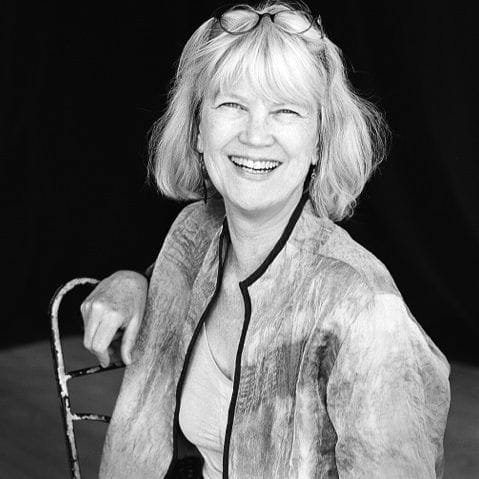
Kim Thoman has been painting and exhibiting in the San Francisco Bay Area and nationally for more than 35 years.
She was a recipient of a grant at the Helene Wurlitzer Foundation of Taos, New Mexico, and other awards include the Vermont Studio Center Residency Grant and Robert Rauschenberg Foundation Change Grant.
Selected solo exhibitions include: The Hardin Cultural Center for the Arts, Gadsden, AL, Godard Center for the Arts, Ardmore, OK, The Peninsula Museum of Art, Burlingame, CA, The Mendocino Art Center, CA, The Anderson Center for the Arts, IN, Saint Mary’s University Gallery of Minnesota, MN, Monterey Peninsula College Art Gallery, CA, Stanford Art Spaces, CA, Bank of America World Headquarters Plaza Gallery, SF, CA, San Francisco MOMA Artists Gallery, CA, Virginia Tech University Perspective Gallery, VA, JFK University Art Gallery, CA, Oakopolis Gallery in Oakland, CA.
Nora Toure: Kim, could you let us know about your background and what brought you to 3D printing in the first place?
Kim Thoman: I’ve been a Bay Area artist and college art instructor for over 30 years. I began working with clay as an undergraduate at the University of California, Davis before I transferred to UC Berkeley and graduated with a BA in Art.
Later I received an MA in Ceramic Sculpture at San Francisco State University. So, I had a firm background and interest in sculpture before I started painting for the next 30 years. About 7 years ago, I started making diptychs (and triptychs) that had one panel that was a digital print.
To create these diptychs I juxtaposed a digital print next to my traditional oil painted panels. The digital prints show a computer designed shape that I call Venuses. Then, to relate the Venus shape with the traditionally painted panels, I photographed and scanned a painting and digitally wrapped these Venus shapes.
At some point, I began to hear about 3D printing. It seemed that I already had the data for printing these Venus shapes in 2D and it wouldn’t be too difficult to print them in 3D. The complication, of course, was that I had to make the shape look good from all sides instead of just the front. This was exciting to me.
Read the rest at Women in 3D Printing

